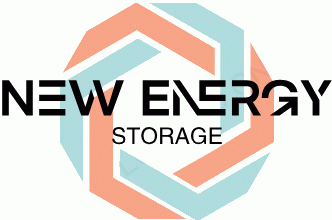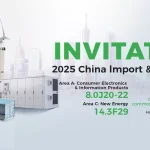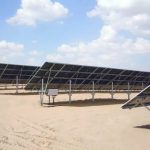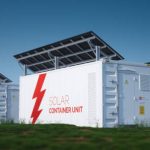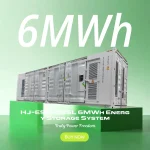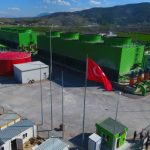Renewable energy in Australia is undergoing a revolutionary transition as the nation embraces new technology in an attempt to keep pace with growing energy demands. Among the primary drivers of transformation is the utilization of new and innovative energy storage solutions to complement solar panels, lithium battery packs, and solar inverters. In particular, high-tech systems like Solar PV containers prove useful in solving market problems and generating a constant, clean source of power. This article looks at the top five energy storage solutions that are powering Australia’s renewable future by 2025.
1. Tesla Powerwall: Best Residential Energy Storage
Tesla Powerwall is a cutting-edge energy storage solution that is easy to deploy and efficient. As part of Australia’s renewable energy network, the Powerwall integrates a cutting-edge solar inverter with top-shelf lithium battery technology to capture and transmit extra solar power.
Key Features:
- High Energy Density: Provides excellent performance in compact spaces.
- Integrated Solar Inverter: Simple installation and high-efficiency conversion.
- User-Friendly Interface: Provides real-time monitoring and control.
- Scalability: Powerwalls are stackable to achieve a higher capacity.
This product is highly sought after by residential buyers who want to save on electricity bills and grid reliance through the storage of solar energy for future use.
2. LG Chem RESU Series: Reliable and Flexible
LG Chem RESU Series offers a complete energy storage solution for residential and commercial uses. Informed by cutting-edge lithium battery technology, the RESU series is made to deliver great performance and reliability.
Important Features:
- Small and Efficient Design: Suitable for varying installation purposes, like solar PV container mounting.
- High Energy Conversion Efficiency: Maximizes utilization efficiency by extracting most of the solar panels’ power.
- Long Cycle Life: Offers longer performance over a very long number of years.
- Flexible Configurations: Easy to scale to different energy needs.
LG Chem’s trustworthiness and innovativeness propel it to become Australia’s first choice company for its renewable energy ventures, offering maximum overall system efficiency.
3. Solar PV Container Systems: Modular and Portable Energy Storage
Solar PV Container Systems is a new technology that combines solar panels, battery storage, and inverters into one, modular unit. Containerized units like this are highly beneficial, particularly to remote areas as well as for urban centers with limited space.
Key Features:
- Modularity: Easy to add on as energy demands accumulate.
- Rapid Deployment: Pre-assembled units allow the deployment to be done quickly.
- More Longevity: Crafted to operate effectively in harsh environmental conditions.
- Integration: Balances seamlessly in Australia’s clean energy grid.
Through keeping all components in a single compact container, Solar PV Container systems harvest and store power at the optimal level of efficiency, and therefore can be implemented in both grid-connected and off-grid systems.
4. Hybrid Energy Storage Systems: Fusion of Technologies for Optimal Performance
Hybrid energy storage systems combine two or more storage technologies—such as lithium batteries and supercapacitors—to obtain maximum high energy density and high power delivery. This approach is applicable when the energy consumption is changing and the grid stability is required.
Key Features:
- Improved Flexibility: Offers optimum performance at maximum loads and rapid discharge conditions.
- Cost-Effectiveness: Establishes a balance between response time and storage capacity.
- Improved System Reliability: Guarantees ongoing power supply against variability in renewable energy generation.
- Seamless Integration: Seamlessly interfaced with solar panels and solar inverters to provide end-to-end energy solution.
Hybrid systems are fast becoming the technology of choice in commercial and industrial applications, helping Australia integrate renewables better without putting the grid under strain.
5. Virtual Power Plants (VPP): Distributed Energy Storage Aggregation
Virtual Power Plants (VPP) are advanced systems that integrate distributed energy resources such as home battery storage, commercial solar photovoltaic systems, and hybrid energy solutions into a single system. VPPs in Australia are revolutionizing the generation, storage, and distribution of energy.
Key Features:
- Decentralized Control: Dockets a string of small-scale storage systems to behave like a single powerhouse.
- Real-Time Optimization: Employs high-end energy management systems to track and regulate energy flows in real-time.
- Grid Support: Supports grid stability by balancing the distributed energy supply and demand.
- Economic Incentives: Offers revenue to participants by offering surplus energy into the grid.
The VPPs not only optimize energy efficiency and grid reliability but also ensure more Australian involvement in the renewable energy market, leading to a more robust energy environment.
Future Outlook and Market Challenges
The integration of future-proof energy storage technologies is intrinsic to Australia’s renewable energy destiny. As the market continues to evolve, various drivers will dictate the industry:
- Increased Investments: Continued governmental support and investment by private sector players will continue to drive the evolution in energy storage technology.
- Technological Innovation: Continued innovation in lithium battery performance, solar inverter efficiency, and containerized storage will continue to enhance system performance.
- Market Challenges: Integration difficulties of technology, steep upfront costs, and supply chain are still big challenges. Addressing these challenges will require the efforts of policymakers, investors, and technology suppliers.
- Scalability and Adaptability: Modular solutions like Solar PV Container systems and hybrid energy storage systems are scalable, and thus are most likely to possess the capability to serve Australia’s growing and diversified energy needs.
With the overcoming of such barriers, Australia is able to utilize these top five energy storage systems in achieving a more sustainable, efficient, and robust renewable energy future by 2025.
